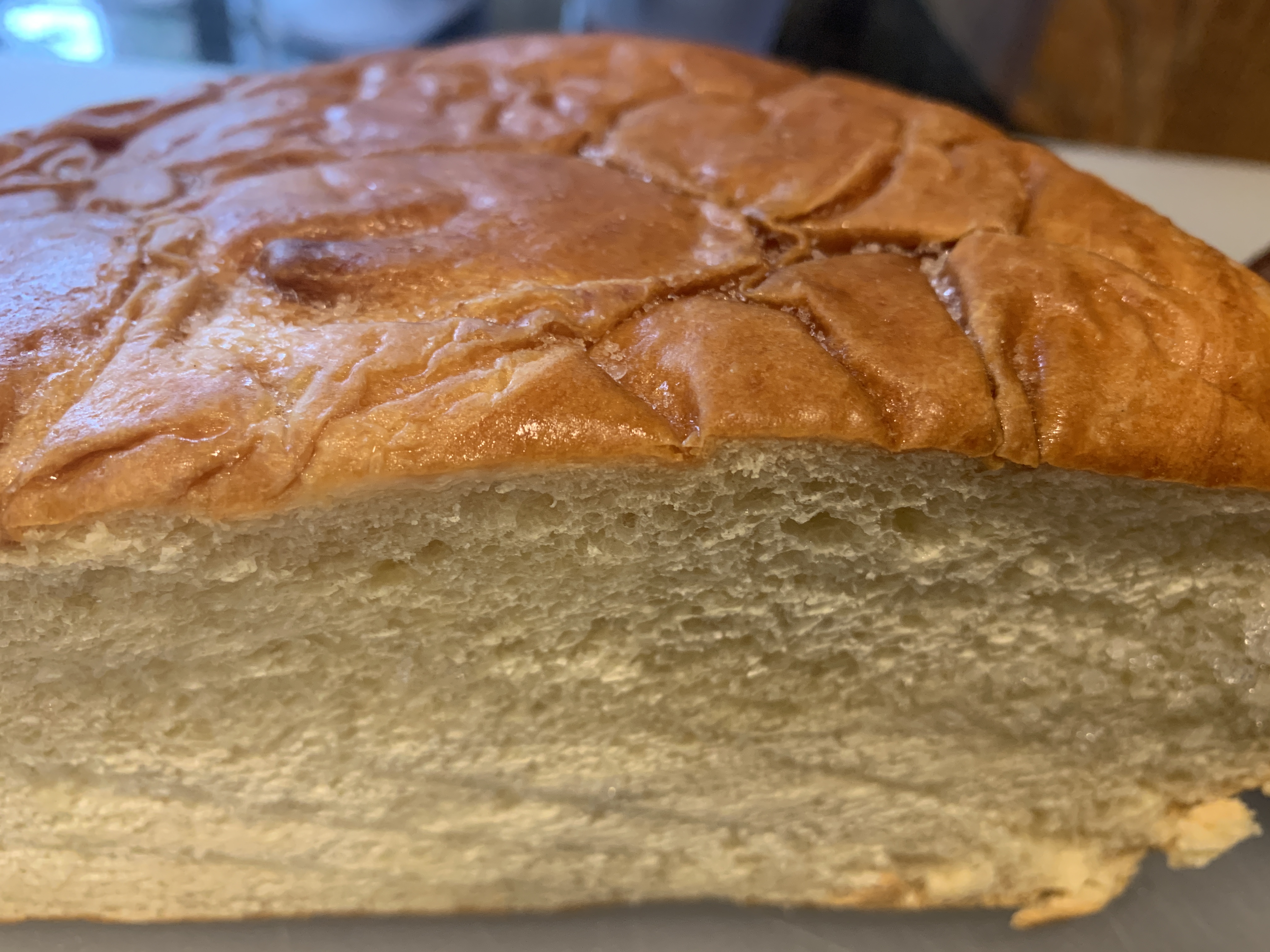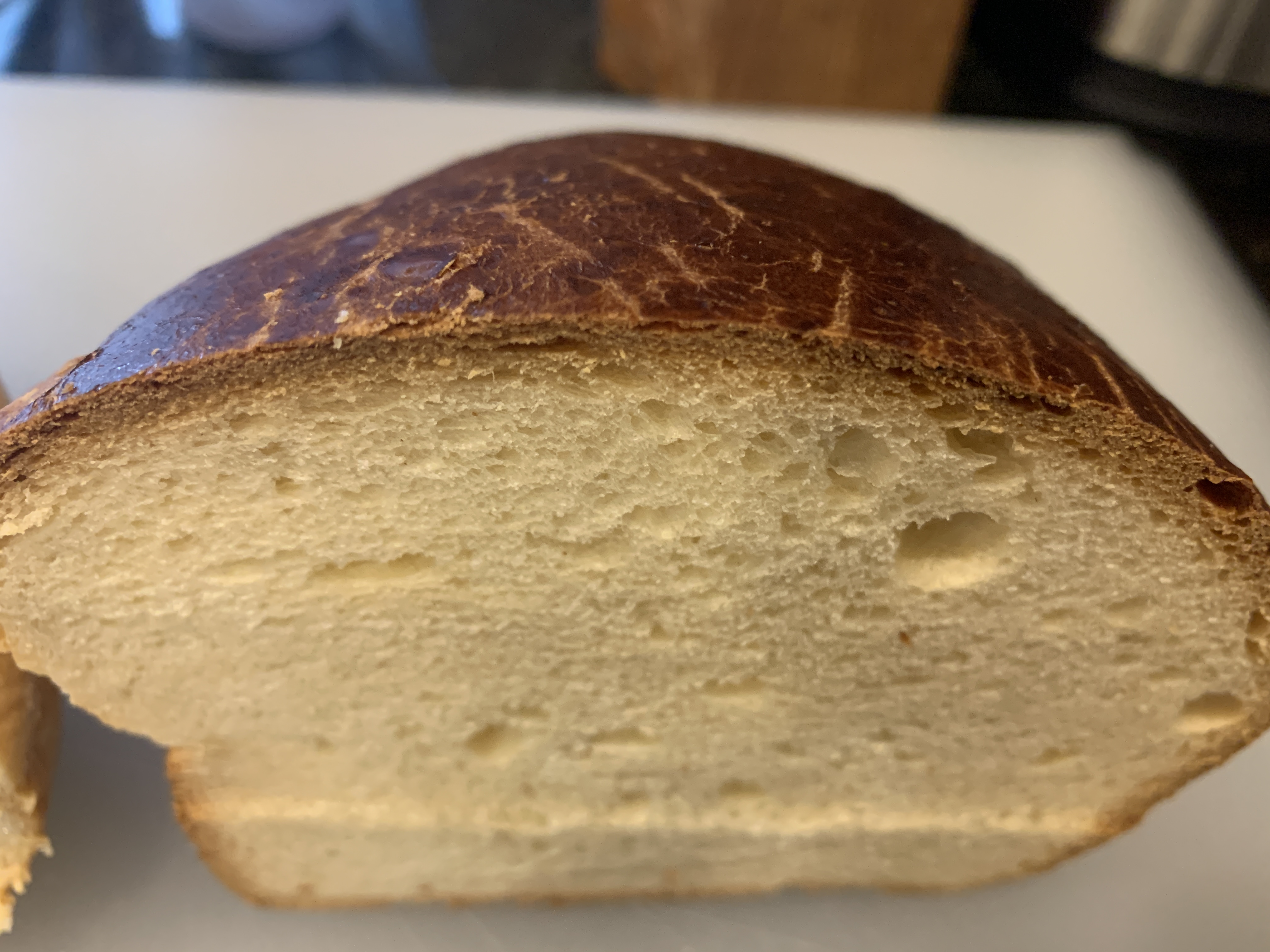When I try to replicate Portuguese Sweet Bread (Massa Sovada) from places like Fall River, Massachusetts, the crust on my bread comes out thick and hard, whereas the bakery versions have a thin, soft crust that you can almost peel off, and there are noticeable wrinkle lines.
Here's the bakery version:
And here's mine, with the thick, hard crust:
I've looked at several recipes and most are very similar. Here's the one I'm using:
- 1/4 cup warm water
- 1/2 cup whole milk
- 1/4 cup butter, room temp
- 2 eggs
- 2 teaspoons grated lemon peel
- 3/4 cup sugar
- 1/2 teaspoon salt
- 3 1/2 cups flour
- 1 package (2 1/4 teaspoons) instant or active dry yeast
- Egg glaze: 1 egg yolk beaten with 1 tablespoon milk
Things I've tried:
- Changing the flour: I've tried bread flour and all purpose.
- Changing the cooking temperature: I've tried 330F (fan-assisted) as well as a combination of temperatures: 11 min. at 320F, 30 min. at 285F, 65 min. at 250F.
- Egg glaze: with and without.
- Steam after baking: I tried covering the loaf with a bowl until it cooled.
But nothing changed the crust much at all.
The wrinkles on top look like maybe it was put into a plastic bag right out of the oven, and the steam caused the wrinkles. But my test with covering the loaf with a bowl didn't change the hard crust at all.
There's a similar post with suggestions such as using a Pullman (covered) loaf pan but it seems unlikely to me that the bakery is doing that because of the shape of the bread and the type of pan I know they use (which can be seen here). I have wondered if covering it with foil for part of the time might help, but I'd be surprised if the bakery is doing that. The post also has suggestions to use steam (which seems like it'll have the opposite effect) and to user lower temperatures, which I followed exactly using the three temperatures I mentioned above. For those reasons, I don't believe the post answers my question:
How bakeries do a soft crust breads and making the same at home will result in a crisp crust?
Thanks for any other ideas!


